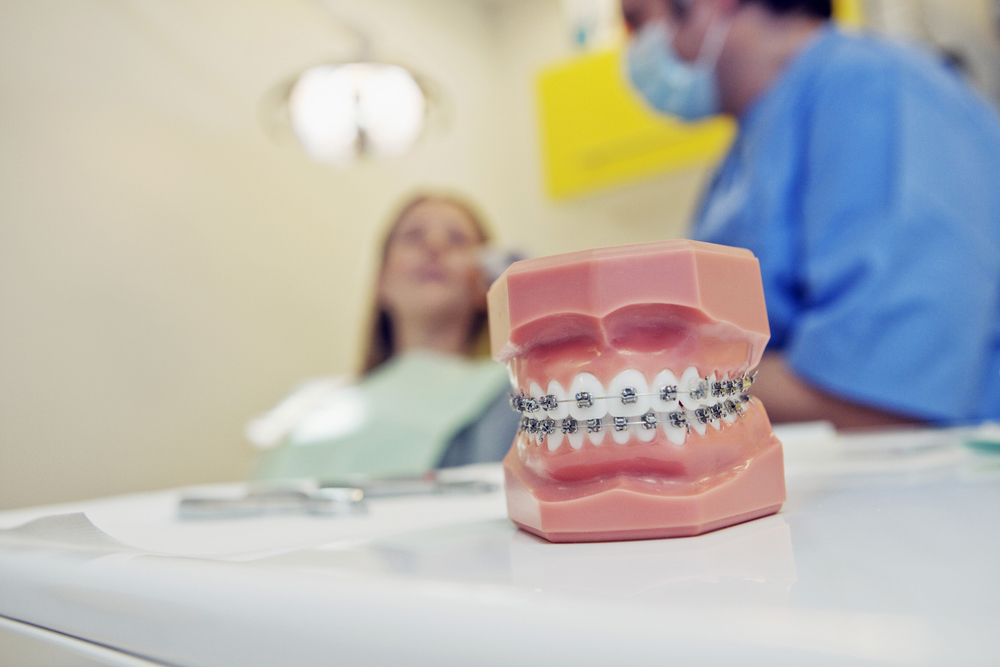
Are you thinking of your child’s toothless grin with gaps and misalignment? If so, it’s likely that you are also thinking about if orthodontic treatment might be needed at some point. Orthodontic treatment allows for the ability to create a healthy, functional bite with proper tooth alignment and jaw position.
Braces and other orthodontic treatments promote excellent oral health and general physical health, all while creating an attractive smile as a bonus.
The Difference Between Baby Teeth and Permanent Teeth
Unless you have compared your adult teeth to a child’s baby teeth, you might be surprised to learn that you have a different amount of teeth. Baby teeth are smaller, fewer in number, and they are only present for a few years. Adult teeth are larger in size, stronger, and will last for many decades with proper care.
Baby Teeth
Because baby teeth eventually fall out, many are under the misconception that they are less critical. Developing healthy oral habits at a young age is essential in building the foundation of a healthy adult smile. A child has 20 total baby teeth, which include:
- Four lateral incisors
- Four central incisors
- Four-second molars
- Four first molars
- Four cuspids (canine teeth)
Permanent Teeth
One of the essential roles of baby teeth is to encourage the adult, permanent teeth to erupt in their proper positions. Baby teeth act as spacers until the permanent teeth are ready to by holding the space in the jaws required for the correct development of the permanent adult teeth. Typically, under healthy, accident-free conditions, a baby tooth will remain in your child’s mouth until the permanent tooth underneath it is almost through the gum surface. The roots of the baby tooth disintegrate when a permanent tooth is ready to erupt, allowing the baby tooth to loosen and fall out. If a baby tooth is lost before the permanent tooth is ready to erupt, it can cause spatial issues for the adult teeth. At times, it is necessary for a dentist or orthodontist to use dental space maintainer devices to fill the place of the primary tooth until the permanent tooth is ready to emerge.
As baby teeth begin to fall out, they are slowly replaced with 32 permanent teeth, including:
- Four third molars (wisdom teeth)
- Four-second molars (12-year molars)
- Four first molars (six-year molars)
- Four central incisors
- Four lateral incisors
- Four cuspids
- Four first bicuspids
- Four-second bicuspids
When To Expect Permanent Teeth
Primary teeth are typically entirely erupted by the age of three, just in time for a child’s jaw and facial bones to grow. Around age 6, a child’s jaw is large enough to accommodate permanent teeth, and baby teeth begin to fall out as a result. There is variability based on genetics and environmental factors, but most children will have 28 permanent teeth by age 13. The remaining teeth, four wisdom teeth, will erupt between ages 17 and 21, though it is possible for people to be missing one or more wisdom teeth. You can keep track of your child’s permanent teeth using a permanent teeth chart.
When To See an Orthodontist
It is recommended that your child have an orthodontic evaluation by the time they reach their 7th birthday. The best time for your child to get braces depends on the severity and the cause of any misalignment in the teeth. Traditional orthodontic treatment typically begins when a child has lost most of his or her baby teeth, and a majority of the adult teeth have grown in. If treatment is needed during the ages of 8-14, interceptive, or preventative care can take advantage of your child’s growth to guide the intended result as development takes place.
Is It Too Late For a Check-Up?
If your child is older than 7, it is not too late for their first orthodontic check-up and evaluation. Should treatment be needed, keep in mind that many patients begin treatment between the ages of 9 and 16, depending on their physiological development and treatment needs. We are usually able to treat most conditions successfully with the result being a healthy and beautiful smile. Schedule an orthodontic consultation appointment with Thomas Orthodontics today!





